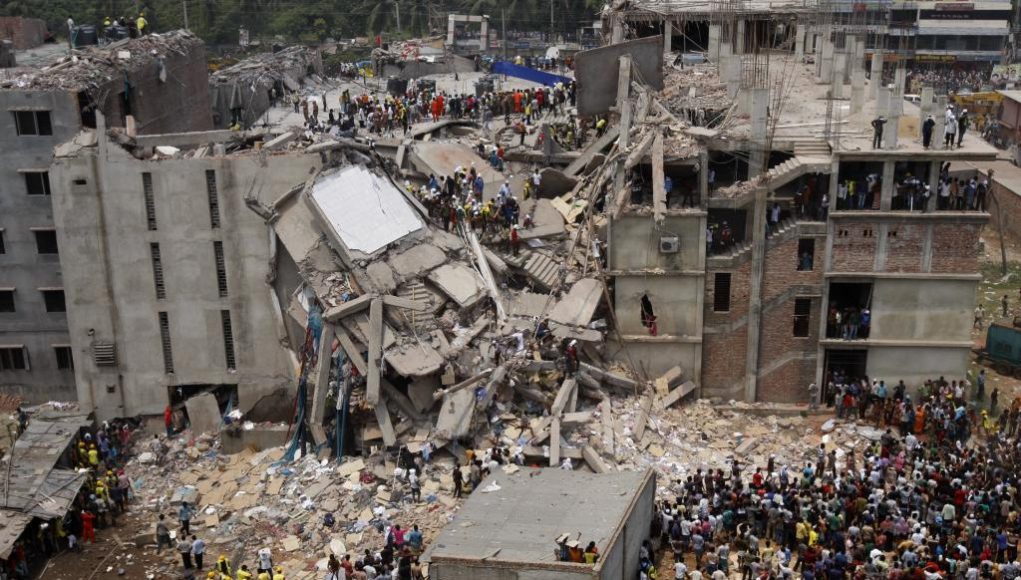 Many long years of hard work, protest and passion have gone into the fight for rights of American workers. That’s all well and good, but doesn’t do much for the workers in foreign sweatshops, where a grand majority of garments purchased in the US are made. What is the true price of the clothing we wear? The health and safety of those who make our clothes is something we should all be concerned about.
Many long years of hard work, protest and passion have gone into the fight for rights of American workers. That’s all well and good, but doesn’t do much for the workers in foreign sweatshops, where a grand majority of garments purchased in the US are made. What is the true price of the clothing we wear? The health and safety of those who make our clothes is something we should all be concerned about.
Workers around the world work in unsafe conditions. In 2013, Rana Plaza, a factory building in Bangladesh, collapsed and killed over 1,100 people, most of them women. According to an article written by the The War on Want, a worldwide movement fighting for global justice, workers started to see cracks on the walls and everyone was evacuated from the building, except the garment workers, who were forced to stay and work out of fear for losing their jobs. We have to ask ourselves, why would someone stay in a building they knew was about to collapse? Is it because of our selfishness for cheap clothes that someone would rather die for such low wages than to get nothing at all?
It should come as no surprise that if we are paying for cheap quality we are also paying for cheap labor. But, exactly how cheap are we talking about? The average apparel worker in Bangladesh makes thirteen cents an hour (according to the Independent Institute), and works an average of fourteen hours a day, six days a week. That adds up to around $11 per week. Forty-four dollars per month. This still falls short of the required minimum wage, which is about $67 a month for a family of three, to have their basic dietary needs meet. Someone working eighty-four hours a week should not live in poverty.
Some may say that although it’s a devastating situation, if we actually did anything about it, we may end up hurting ourselves. These people believe prices would skyrocket, doubling or tripling compared to clothing we have already bought. Although prices would go up for our clothing, what we can do is be watchful buyers and look at the tag and see where our clothes come from, even look into the our favorite store and see where their clothes are produced. It is possible to get big name companies to change their policies. For instance back in the 90’s people started to boycott Nike so that they would take into responsibility on how the people making their apparel were being treated. Nike since then has conducted more inspections on their producing companies and makes reports available to the public. Also we wouldn’t be paying for the same quality anymore, either, instead, we would be paying for higher quality — and better treatment of human beings. That is a sacrifice we are all able to make; if we are not able to do that, then there are plenty of secondhand stores we can shop at.
Human rights should be the same for each individual on earth; it does not matter what part of the world you come from. We all have the right to make a living wage in a secure job; no one is allowed to exploit anyone just to make a buck, for any reason. Let us all be conscious consumers and really think about the real price of what we are wearing.










